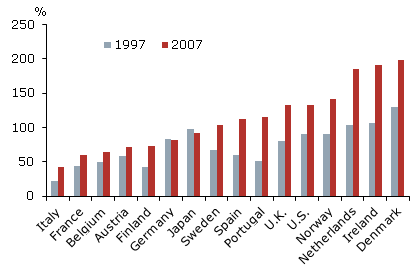
The world has been wondering for a while what stays behind the huge Chinese households’ savings rate, currently at 30% of the disposable income. Conventional wisdom points out that since there is no government safety net in China, the locals have to make sure that they have enough money for education, health care and retirement. This is certainly a valid reason, but as it turned out – not the main one.
Yes, part of the Chinese savings is to make up for the inadequacy of the social safety net. Yes, there may be some increase in the cost of healthcare. But, as the social safety has improved and the insurance coverage has expanded over the last decade or so, we should expect household savings to decline, or at least not increase. Yet, household savings as a share of disposable income almost doubled from 16% in 1990 to over 30% today.
There is a social phenomenon behind the high savings rate in China. For every 100 girls in China, there are 122 boys today. The gap is staggering and it is the biggest in the world. It means that at least 1/5 of all the boys won’t be able to get married. China’s stringent family-planning policy allows most couples to have only one or two children. Most families prefer a boy and often abort their first child if it is a girl. A major deal breaker for Chinese girls is the ability of their man (or his family) to provide a house for the future family. Therefore the ability to get married is often dependent on the thickness of the family wallet. You can see on the graph above that ever since the ratio of men/women in China started to rapidly rise in the late 1990s, the households’ savings rate skyrocketed. Families with a boy tend to save much more than families with a girl as a child. (a conclusion made by Professor N.T. Wang.)
Sounds interesting. I’ve always thought that the huge households’ savings rate in China is due to a gradual increase in the living standard there. As the disposable income for all Chinese has started to increase in the mid and late 1990s, they haven’t changed their spending habits and accumulated vast amounts for rainy days. It seems like during the last several years, the Chinese have started using their savings to invest (or I would say speculate) in real estate market. I am afraid that many of them are buying overpriced assets and in the following 5 years, they will see their savings disappear as the value of the real estate in China starts to decline.

